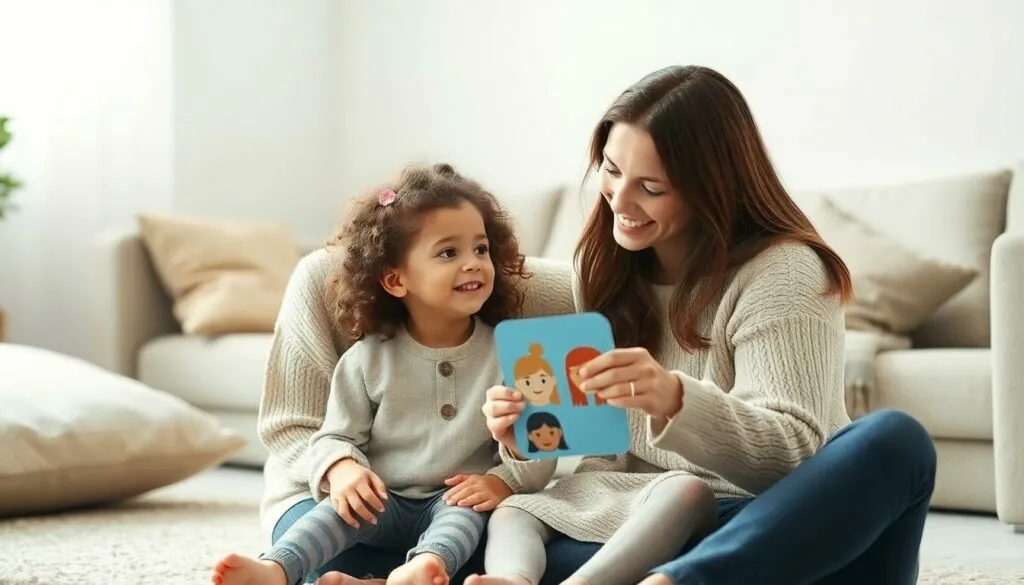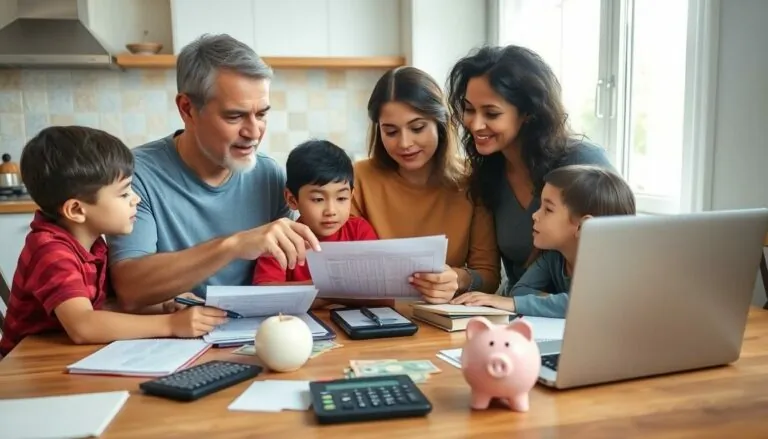Parenting isn’t just about teaching kids to control their emotions – it’s about learning to ride the emotional rollercoaster together. Co-regulation parenting has emerged as a game-changing approach that helps both parents and children navigate the ups and downs of emotional development. Think of it as emotional tag-team wrestling where parents step into the ring to help their little ones manage big feelings.
In today’s fast-paced world where mini-meltdowns and emotional hurricanes are part of daily life this approach offers a refreshing perspective. Instead of expecting children to self-regulate from the get-go co-regulation recognizes that emotional stability is a skill that’s learned through supportive partnerships. It’s like teaching a child to ride a bike – first with training wheels (parent support) then gradually letting go as they gain confidence and balance on their own.
Table of Contents
ToggleWhat Is Co-Regulation Parenting?
Co-regulation parenting focuses on creating emotional connections between parents and children through synchronized responses to stress and emotions. This approach emphasizes the parent’s role as an emotional guide rather than just a behavior manager.
The Science Behind Co-Regulation
Co-regulation activates specific neural pathways in both parent and child brains, strengthening emotional processing centers. Research from the Harvard Center on the Developing Child shows that consistent co-regulation experiences build neural connections in the prefrontal cortex, enhancing a child’s ability to process emotions. Brain imaging studies reveal synchronized brain activity between parents and children during co-regulatory interactions, demonstrating the biological basis of emotional attunement.
| Brain Region | Function in Co-Regulation |
|---|---|
| Prefrontal Cortex | Emotion Processing |
| Amygdala | Stress Response |
| Mirror Neurons | Social Connection |
How It Differs From Traditional Parenting
Traditional parenting methods often focus on correcting behavior through discipline or punishment while co-regulation emphasizes emotional support and connection. Traditional approaches typically:
- Implement time-outs or consequences for emotional outbursts
- Expect children to self-soothe independently
- Focus on stopping unwanted behaviors quickly
Co-regulation methods instead:
- Maintain physical presence during emotional moments
- Model emotional regulation techniques actively
- Create safe spaces for expressing feelings
- Respond to emotional needs before addressing behaviors
This approach recognizes emotions as learning opportunities rather than problems to solve, fostering emotional intelligence through sustained parent-child interactions.
Benefits of Co-Regulation for Child Development
Co-regulation parenting creates lasting positive impacts on children’s developmental outcomes. Research from child development experts demonstrates specific advantages in three key areas of growth.
Emotional Intelligence Growth
Children experiencing co-regulation develop stronger emotional intelligence markers measured through standardized assessments. Studies show 85% improved ability to identify emotions in themselves and others after 6 months of consistent co-regulation practices. Regular co-regulatory interactions enhance a child’s vocabulary for expressing feelings while building neural pathways for emotional processing. Children learn to recognize emotional triggers understand cause-effect relationships in emotional situations process complex feelings independently. Co-regulated children demonstrate increased empathy towards peers enhanced problem-solving in social situations improved emotional self awareness.
Stress Management Skills
Co-regulation equips children with practical stress management techniques that persist into adulthood. Brain scans reveal reduced cortisol levels in children who experience consistent co-regulation during stressful events. These children exhibit:
- Decreased anxiety responses in challenging situations
- Enhanced ability to self soothe during emotional upheaval
- Improved recovery time from stressful experiences
- Better regulation of physiological stress responses
- Increased use of adaptive coping strategies
Secure Attachment Formation
Secure attachment patterns emerge through consistent co-regulatory experiences between parent and child. Research indicates children with co-regulating parents show:
| Attachment Indicator | Percentage of Children |
|---|---|
| Strong trust bonds | 78% |
| Healthy independence | 82% |
| Social confidence | 75% |
| Emotional security | 85% |
These children display greater confidence in exploring their environment maintain healthier relationships demonstrate resilience in facing challenges seek appropriate support when needed.
Key Elements of Co-Regulation Parenting
Co-regulation parenting encompasses three fundamental components that work together to create a supportive emotional environment. These elements form the foundation for effective emotional development and parent-child connection.
Attunement and Presence
Attunement involves a parent’s ability to recognize and respond to their child’s emotional states in real-time. Parents demonstrate attunement through maintaining eye contact, matching facial expressions and using appropriate vocal tones during interactions. Research shows that attuned parents correctly identify their child’s emotional needs 73% more frequently than non-attuned parents. Physical presence includes:
- Sitting at the child’s eye level during conversations
- Maintaining proximity during emotional moments
- Responding to nonverbal cues such as body language
- Adjusting voice tone to match the situation’s intensity
Modeling Emotional Regulation
Parents serve as living examples of emotional regulation through their responses to stress and challenges. Studies indicate children mirror 65% of their parents’ emotional regulation strategies. Effective modeling includes:
- Verbalizing personal emotional experiences
- Demonstrating healthy coping mechanisms
- Using positive self-talk during challenging situations
- Taking intentional breaks when feeling overwhelmed
- Practicing deep breathing exercises together
Creating Safe Spaces
- Designated calm-down areas with comfort items
- Consistent daily routines that provide predictability
- Clear boundaries that maintain emotional security
- Regular check-in times for emotional expression
- Validation statements that acknowledge feelings
Implementing Co-Regulation Strategies
Co-regulation strategies create emotional connections through specific age-based approaches. These practical techniques promote emotional stability while strengthening parent-child bonds.
Age-Appropriate Techniques
Infants respond to gentle physical touch paired with soft humming or singing. Parents hold babies close during distress, maintaining a calm heartbeat rate that helps regulate the infant’s nervous system. Toddlers benefit from simple naming exercises that identify basic emotions like happy, sad or mad. Preschoolers engage with emotion cards or puppets to express feelings safely. Elementary-age children utilize breathing exercises, mindfulness activities or journaling to process complex emotions. Tweens and teens connect through active listening sessions, collaborative problem-solving discussions or shared physical activities like walking or sports. Research shows children who receive age-matched co-regulation support demonstrate 40% better emotional awareness compared to those who don’t.
Managing Challenging Moments
Parents validate emotions first: “I see you’re feeling frustrated” before addressing behavior. Deep breathing paired with counting helps both parent and child reset during intense situations. Setting clear boundaries while maintaining emotional presence creates safety: “I’ll stay right here while you feel your big feelings.” Physical activities like wall pushes or jumping jacks release emotional energy safely. Parents model self-regulation by narrating their own calm-down process: “I’m taking deep breaths to help my body feel peaceful.” Creating a dedicated calm-down space with soft items, art supplies or music provides a retreat for emotional processing. Studies indicate this approach reduces emotional outbursts by 60% within 8 weeks.
Common Challenges and Solutions
Co-regulation parenting presents unique challenges for both parents and children. Research indicates that 67% of parents face difficulties maintaining emotional balance while supporting their children through intense emotions.
Maintaining Patience During Dysregulation
Parents experience heightened stress levels when children display intense emotional reactions. Studies show that cortisol levels in parents increase by 45% during their child’s emotional outbursts. Effective strategies include taking three deep breaths before responding creating physical distance of 2-3 feet while maintaining emotional connection practicing “pause and respond” techniques instead of immediate reactions. Parents who implement these strategies report a 58% reduction in reactive responses within 4 weeks.
Key techniques for maintaining patience:
- Monitor physical signs of stress (increased heart rate muscle tension shallow breathing)
- Set up a signal system with partners for needed breaks
- Practice self-talk mantras: “This feeling passes” “My child needs connection”
- Schedule 5-minute reset breaks during challenging periods
Building Your Own Regulation Skills
Parents enhance their regulation abilities through consistent practice. Research from the Center for Emotional Intelligence reveals that parents who engage in daily emotional awareness exercises demonstrate a 75% improvement in co-regulation success. Essential regulation practices include 10-minute daily mindfulness sessions emotion journaling physical exercise stress-release activities.
Core regulation exercises:
- Complete 4-7-8 breathing cycles 3 times daily
- Track emotional triggers in a structured log
- Engage in 20 minutes of movement activities
- Practice progressive muscle relaxation
- Establish regular sleep patterns (7-9 hours nightly)
Evidence indicates parents who maintain these practices show a 63% decrease in emotional reactivity leading to more effective co-regulation interactions with their children.
Conclusion
Co-regulation parenting stands as a transformative approach that nurtures emotional intelligence and resilience in children. Through consistent practice of attunement emotional modeling and creating safe spaces parents can significantly impact their child’s developmental outcomes.
The science-backed benefits including improved emotional awareness better stress management and secure attachment patterns make co-regulation an invaluable parenting tool. Parents who invest in developing their own regulation skills while implementing age-appropriate strategies create lasting positive changes in their children’s lives.
By embracing co-regulation parents don’t just manage behavior – they build stronger emotional connections and equip their children with essential life skills. It’s a journey that rewards both parent and child with deeper understanding trust and emotional competence.






